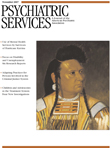Kaiser Report Takes a Closer Look at the Newly Uninsured Population
In August the U.S. Census Bureau reported that in 2006 the number of uninsured Americans increased by 2.2 million, largely because of a decrease in employer-sponsored insurance. Of this group, 2.1 million were under age 65, including 710,000 children age 18 and under. A new, in-depth analysis by the Kaiser Commission on Medicaid and the Uninsured takes a closer look at the 2.2 million increase, examining changes by age and income.
The overall likelihood of a child's being uninsured increased significantly between 2005 and 2006—from 11.2% to 12.1%. Nearly half (48%) of the newly uninsured children are from families with incomes between 200% and 399% of the federal poverty level, or about $40,000 to $80,000 for a family of four in 2006. As the issue brief notes, this is the income group that the Bush administration has argued should not be eligible for expansions in the State Children's Health Insurance Program (SCHIP). The proportion of children in this group with employer-sponsored coverage declined from 76.6% to 75.4% in 2006, resulting in an increase in the uninsurance rate from 7.6% to 9.1%—or 340,000 newly uninsured middle-income children.
Children in lower-income families accounted for a smaller share (31%) of the increase in uninsured children. The proportion covered by employer-sponsored insurance declined from 31.2% to 29.5% in 2006. This was partly offset by an increase in Medicaid and SCHIP coverage of 1.3%—from 44.5% to 45.7%. Thus the increase of 220,000 in the number of uninsured low-income children was not statistically significant.
Among children in families at 400% or more of the poverty level, employer-sponsored coverage declined from 89.5% to 88.5%, which resulted in an increase of 150,000 uninsured children in this income group in 2006.
Among adults in 2006, the number of uninsured increased by 1.4 million, bringing the adult total to 37 million. The uninsured rate increased from 19.8% to 20.4%. Adults experienced declines in employer-sponsored coverage at all income levels; the greatest declines were among those with low incomes. However, public coverage is limited for adults, even at low incomes. As a result, nearly half the growth in uninsured adults was among those with incomes below 200% of the poverty level. About 670,000 low-income adults joined the newly uninsured population in 2006. The number of uninsured middle-income adults increased by 340,000. Among adults with incomes above 400% of the poverty level, only small changes in employer-sponsored coverage were noted. However, because of large population increases in this income group, there was an increase of 370,000 adults without coverage.
Although the decline in the proportion of children with employer-sponsored insurance was steeper for children than adults, it does not appear to be driven by the availability of Medicaid and SCHIP coverage for children from families with low incomes. Employer-sponsored coverage declined for children at all income levels.
The average total premium cost for employer-sponsored coverage continues to increase—$12,106 for family coverage, with an average worker contribution of $3,281 in 2007. Premium amounts have nearly doubled since 2000, according to the issue brief, which is available on the Kaiser Commission Web site at www.kff.org.



